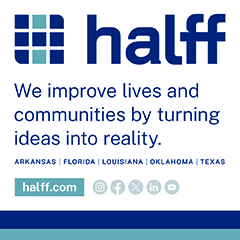Throughout America, local governments are betting big on recreation as a catalyst for growth. From sprawling youth-sports complexes and gleaming aquatic centers to billion-dollar stadiums and multipurpose arenas, these types of projects draw visitors, fill hotels, and revitalize local economies.
The results can be striking. Las Vegas’s Allegiant Stadium now generates about $60 million in public room-tax revenue annually, while San Francisco’s Chase Center has delivered an estimated $4.2 billion in regional economic activity since opening in 2019. Supporters say such investments transform communities into year-round destinations and help diversify local economies once dependent on a single industry.
Yet the economic scorecard is mixed. Some facilities, such as the bankrupt Bell Bank Park in Mesa, Arizona, have fallen far short of expectations, serving as cautionary tales for cities chasing the same dream. Performing arts centers, concert venues, and sports complexes, meanwhile, offer a revealing counterpoint. Most civic projects share a common ambition — to turn culture and community into lasting economic return, and most are successful.
The following projects represent many similar initiatives, and these initiatives will be released soon for contracting activities.
Officials at Spring Branch Independent School District in Texas are planning to launch a $76.9 million project that will relocate the district’s current aquatic competition pool. The effort will replace a nearly 50-year-old natatorium that no longer meets modern athletic or instructional needs. The funding was made available through a May 2025 bond election.
The new facility will feature a 65-meter by 25-yard competition pool with an integrated diving well located in the district’s athletics complex. Plans call for seating for 1,200 spectators and a separate instructional pool that can be used for physical education and learn-to-swim programs. The facility will have modern locker rooms, training and weight areas, coaching offices, storage units, and concession space. Other features will include new parking areas, expanded deck space, and improved access for visitors, swimmers, and event staff.
When completed, the new facility will serve districtwide aquatics and support high school swimming, diving, water polo teams and K–8 instructional programs. It will allow the district to host large-scale regional and state competitions. The project is currently in the planning and design phase, with construction anticipated to begin in Summer 2026.
Officials in Seminole County, Florida, are advancing plans for a new 200,000-square-foot indoor sports complex. It will be located adjacent to an existing outdoor facility, creating a major sports and recreation hub.
The facility will include 12 basketball courts, 24 volleyball courts, and a regulation-size turf soccer pitch. Plans also include supporting event space, meeting rooms, and lounges. Eight additional acres are reserved for new outdoor fields. Officials are evaluating two options: a $100 million project scope that includes a parking garage, and a $66 million plan that would not provide any additional parking. Funding support will come from hotel fees collected through the county’s Tourism Improvement District. The county is seeking consultants to advise on design and final scope with construction expected to begin in 2027.
In Rapid City, South Dakota, officials will soon launch a $450 million project to construct an indoor sports facility that will be situated on approximately 23 acres of land that will serve as a regional center for youth competitions and year-round community use. The project will also include a multi-court fieldhouse with eight basketball courts, an indoor hybrid turf area for multi-sport training, sports performance spaces, locker rooms, seating for spectators, and on-site parking. Enhancements to the public infrastructure will facilitate access and encourage complementary private development.
The project is currently in the pre-development, funding agreement, and design phase, and the project will be delivered in phases over the next several years. Once the design is completed, industry engagement and procurements will follow. Solicitations will be released first for construction, but there will be additional opportunities as well. The phased construction is expected to continue into 2029.
University officials in Riverside, California, are finalizing plans to redevelop a multibillion-dollar sports complex in an existing 56-acre entertainment center site. The complex will be transformed into a regional campus developed to include athletics, entertainment, and mixed-use development. Planned features will include a professional size multi-use stadium, a 130,000 square foot indoor sports and game complex, a stadium hotel, a live music and festival venue, and residential and retail space.
Phase one will center on the construction of the multi-use stadium which will be designed to host professional soccer, rugby, football, and lacrosse events. The facility will have an initial seating capacity of 5,005, with expansion options that allow expansion of up to 15,000 seats as demand increases. Supporting infrastructure in the first phase will include surface parking, roadway access improvements, and utility extensions to serve the broader district.
The estimated cost for phase one could be as high as $200 million, while the full buildout could conceivably reach several billion dollars. Currently in the planning and entitlement phase, project officials anticipate construction to begin in late 2027 or early 2028, following environmental review and final development approvals.
As these projects move from blueprints to construction sites, they illustrate how communities across the country are reshaping their economic futures through recreation and entertainment initiatives. Whether it’s a neighborhood natatorium or a billion-dollar stadium, the investments signal confidence in the power of shared experiences where competition, tourism, and civic pride intersect. The measure of success will not be in grand openings alone, but in lasting community use, sustainable operations, and measurable economic benefit. If local leaders can strike that balance, America’s next generation of sports facilities may become not just symbols of ambition, but enduring assets for the communities that build them.
Photo by Pavel Danilyuk from Pexels













